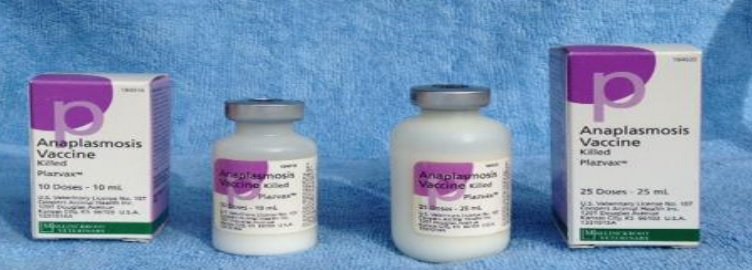strange this thread happening now. we branded a bunch on Saturday and several were pretty loaded up on small to medium sized ticks. I have never seen them this time of year, and it is dry to boot. we do have more standing dry feed than has been normal for a lot of years but usually ticks are late summer and wet years. dogs don't seem to have any and they travel through the same pastures. what is going on?
You are using an out of date browser. It may not display this or other websites correctly.
You should upgrade or use an alternative browser.
You should upgrade or use an alternative browser.
Ticks?
- Thread starter ksmit454
- Start date

Help Support CattleToday:
Nesikep
Well-known member
Yup, she knows exactly how to get what she wants from meShe sure is. She has you trained!
Nesikep
Well-known member
I think they're called deer ticks here... never had the motivation to look at them closely and identify them, disgusting things!Are they moose ticks? Times about right for them in your area I would think.
wbvs58
Well-known member
Babesia sp,Lyme disease and Ehrlichiosis are other diseases that ticks can be vectors for.
Ken
Ken
I ended up with STARI disease: Souther Tick Associated Rash Illness from a Lone Star tick. Wouldn't wish that on my worst enemy.Babesia sp,Lyme disease and Ehrlichiosis are other diseases that ticks can be vectors for.
Ken
wbvs58
Well-known member
The ticks we have seem to be different to yours and the organisms they carry seem to differ but similar, a lot of Rickettsia organisms they seem to carry which tend to have a long lasting effect.
Ken
Ken
ksmit454
Well-known member
Thank you to all who have contributed to this post! Lots of great information. That was my main concern, were the diseases that can come from ticks. Some of you have spoke of Anaplasmosis. I haven't found another tick since but I know we have them. There is no vaccination for this Anaplas, is there? Sadly I do not have very many cattle vets in my area, but the large animal vets both recommend just vaccinating with Cavalary 9. That's all I've been doing.
greybeard
Well-known member
wbvs58
Well-known member
We have a live vaccine, it is actually dilute blood with attenuated organisms of Babesia bovis, Babesia bigemina and Anaplasma marginale. It is called a 3 germ vaccine and you have to order it from the tick research centre so it can be made up and freighted overnight and has to be used immediately. The cattle tick, Boophilus microplus is endemic on cattle in our northern coastal areas and this tick carries the tick fever organisms so any cattle that are born in this tick country get exposed to the organisms and get natural immunity. If you are taking cattle from tick free country west of the ranges down to the coast it is wise to blood them with the 3 germ vaccine before travelling.
These may not be the same organisms that you are dealing with but we have learnt to live with these.
Ken
These may not be the same organisms that you are dealing with but we have learnt to live with these.
Ken
Redgully
Well-known member
It used to be only available to areas prone to anaplas. Vaccinate, then booster. Honestly, not sure how effective it is (was?) and even though I'm in an area that has a lot of anaplas, I only know of 2 operations that have used it.Yes, there is.
I don't/haven't used it and don't know much at all about it but I know there is one (unless it has recently been pulled)
View attachment 14060
Lucky_P
Well-known member
The killed Anaplasmosis vaccine available here in the US is very effective at preventing clinical disease, but, as I understand it, does not prevent infection with field strains, and will, in and of itself, cause cows to have a positive serologic test result.
So...vaccinated cows won't get sick and die, but can be infected, and serve as a potential reservoir to provide infectious Anaplasma organisms to ticks which can then amplify and transmit the organism to naive animals.
So...vaccinated cows won't get sick and die, but can be infected, and serve as a potential reservoir to provide infectious Anaplasma organisms to ticks which can then amplify and transmit the organism to naive animals.
Similar to effectively treating a cow in the early stage? Had one a few years ago that was just starting to show symptoms. Vet tested & treated her, she made a full recovery, but he said she would always test seropositive.The killed Anaplasmosis vaccine available here in the US is very effective at preventing clinical disease, but, as I understand it, does not prevent infection with field strains, and will, in and of itself, cause cows to have a positive serologic test result.
So...vaccinated cows won't get sick and die, but can be infected, and serve as a potential reservoir to provide infectious Anaplasma organisms to ticks which can then amplify and transmit the organism to naive animals.
It appears that being proactive & diligent about fly/tick control is your best line of defense.
Lucky_P
Well-known member
Yes.
We used to think(decades ago) that 2 rounds of oxytetracycline (LA-200/300) would 'clear' the infection - but that is not true... it just 'slows' the replication of the organism long enough for the cow to survive by accelerating production of red blood cells to replace those parasitized RBCs being removed by the immune system, while also mounting their own immune response.
But the immune response is not enough to 'clear' the infection... the organisms changes portions of its surface protein 'coat' every 6 weeks or so, so to the cow's immune system, it's constantly having to respond to a 'new' infection - but after that initial exposure - where they either die or recover - they don't experience another bout of clinical disease... but can serve as a reservoir of infectious organisms to infect the next generation of ticks. Infected cows that survive initial infection are 'persistently-infected carriers' for life.
You cannot get enough oxytet into a cow to actually 'kill' the Anaplasma organism. You can, however, feed CTC at high (above FDA-approved) levels for 60 days or so and effectively clear 'most' persistently infected/carrier animals of the infection. But... that leaves them susceptible to reinfection and at risk of developing life-threatening clinical disease. 'Clearance' is a double-edged sword... not necessarily desirable if Anaplasmosis is endemic in the herd, or in animals on adjacent properties.
We used to think(decades ago) that 2 rounds of oxytetracycline (LA-200/300) would 'clear' the infection - but that is not true... it just 'slows' the replication of the organism long enough for the cow to survive by accelerating production of red blood cells to replace those parasitized RBCs being removed by the immune system, while also mounting their own immune response.
But the immune response is not enough to 'clear' the infection... the organisms changes portions of its surface protein 'coat' every 6 weeks or so, so to the cow's immune system, it's constantly having to respond to a 'new' infection - but after that initial exposure - where they either die or recover - they don't experience another bout of clinical disease... but can serve as a reservoir of infectious organisms to infect the next generation of ticks. Infected cows that survive initial infection are 'persistently-infected carriers' for life.
You cannot get enough oxytet into a cow to actually 'kill' the Anaplasma organism. You can, however, feed CTC at high (above FDA-approved) levels for 60 days or so and effectively clear 'most' persistently infected/carrier animals of the infection. But... that leaves them susceptible to reinfection and at risk of developing life-threatening clinical disease. 'Clearance' is a double-edged sword... not necessarily desirable if Anaplasmosis is endemic in the herd, or in animals on adjacent properties.
faster horses
Well-known member
We have mineral especially for Anaplaz areas. It is Vigortone Fescue EMT Remedy Anaplaz 4.8C
and Fescue EMT Remedy Anaplaz 4.8 CG (CG shows garlic and cinnamon). I have never
sold it, so don't know much about it. but it sells well in areas where it is needed.
I think you would need a VFD from a veterinarian to use it.
and Fescue EMT Remedy Anaplaz 4.8 CG (CG shows garlic and cinnamon). I have never
sold it, so don't know much about it. but it sells well in areas where it is needed.
I think you would need a VFD from a veterinarian to use it.
Lucky_P
Well-known member
Yep. Effective 1 Jan 2017, in order to provide CTC to food animals in feed, water, or mineral supplement, you have to have a VFD from a veterinarian.
Even if you'd had tons of CTC(Aureomycin) on hand on Jan 1 2017, it would have been illegal to feed it without a VFD from a veterinarian with a valid veterinarian/client/patient relationship.
Even if you'd had tons of CTC(Aureomycin) on hand on Jan 1 2017, it would have been illegal to feed it without a VFD from a veterinarian with a valid veterinarian/client/patient relationship.
As always, thanks for your response, @Lucky_P. I do use mineral with CTC, starting about a month prior to tick season (which is subjective, depending on the year). My vet does the "herd health check" for the VFD when he comes out to BANGS/pelvic measure my retained heifers and faxes it to my preferred Co-Op. Interesting, they go through the mineral with CTC three times as fast as "regular" mineral. Does it taste better? Or they crave more salt in the warmer months? Dunno. I've only lost one cow to anaplasmosis - that I know of. Three others were treated & eventually culled.
greybeard
Well-known member
wbvs58
Well-known member
Yes, the key to managing tick fever in Australia is to have our quarantine areas where ticks are endemic. On the coast the animals are symptomless but any stock moved to tick free areas have to go through clearing dips before travelling up the range. If you are in a tick free area and cattle tick are found on your cattle your place is placed in quarantine and it is a very big hassle over a few years before your stock can move freely again.
Ken
Ken
Just one more reason to burn pastures.


